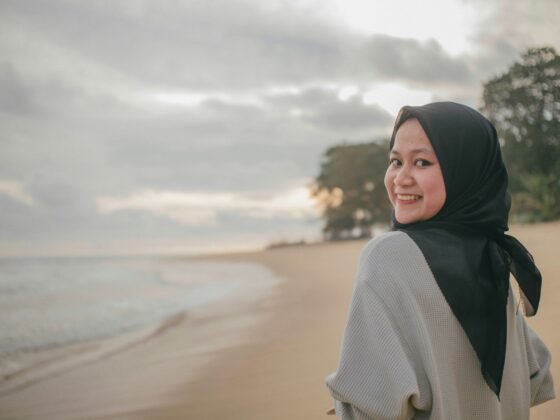Uganda, often referred to as the “Pearl of Africa,” offers a unique and diverse safari experience unlike anywhere else on the continent. Compared to other popular traditional safari experiences like Kenya and Tanzania, Uganda provides an opportunity to see not just the “Big Five” (lion, elephant, buffalo, leopard, and rhinoceros) but also rare and endangered species like the mountain gorilla and the chimpanzee.
Uganda’s rich ecosystems—supported by over ten national parks and multiple game reserves—offer something for every type of safari traveller. The country’s positioning at East and Central Africa’s crossroads also means its biodiversity is unmatched. In addition to mammals, Uganda houses over 1,000 bird species, making it an ideal destination for birdwatchers.
Cultural interactions with local communities, including the Batwa people, enrich your safari’s human element. Uganda’s relatively low tourist numbers compared to other safari destinations ensure a more intimate and less crowded experience, making it the perfect destination for those seeking adventure and tranquility.
Best Time to Go on Safari in Uganda
Choosing the right time to go on safari in Uganda can significantly enhance your experience. Uganda’s climate is predominantly equatorial, with pretty consistent temperatures throughout the year, ranging between 24°C (75°F) and 30°C (86°F) during the day. However, the country experiences two main seasons: the wet season and the dry season. Understanding these seasons is vital to planning the best safari experience.
Dry Season (June to September & December to February)
The dry season is the best time for a Ugandan safari, particularly for wildlife viewing. The rains subside from June to September and December to February, leaving water sources scarce. This means animals gather around rivers and waterholes, making them easier to spot on game drives or walking safaris. Vegetation is also less dense, increasing visibility. These months are ideal for gorilla trekking and chimpanzee tracking, as the trails are drier and less challenging to navigate.
The dry season is also the best time for bird-watching, with many migratory species arriving in Uganda. However, it’s important to note that this is the peak tourist season, especially for gorilla trekking, so accommodations and permits should be booked well in advance.
Wet Season (March to May & October to November)
The wet season in Uganda brings frequent rainfall, but it also has advantages. This period is often called the “green season” because the landscapes come alive with lush vegetation. The wet season is the best time to visit for those who enjoy fewer crowds and lower accommodation prices. Wildlife can still be seen, but animals tend to be more dispersed due to abundant water.
While gorilla trekking is still possible during the wet season, be prepared for muddy and slippery conditions. However, the forest scenery is particularly beautiful after rainfall, and photographers may appreciate the vibrant colours. The wet season is also the best time for bird enthusiasts, as breeding activity increases, making it easier to spot rare species.
Planning Your Safari Itinerary: Key Considerations
Planning a Uganda tour requires careful thought and preparation to ensure your trip is enjoyable and logistically feasible. From choosing the suitable parks to determining the length of your stay, the itinerary you create will largely shape your safari experience. Here are the key considerations to help you plan an itinerary that matches your interests, budget, and travel style.
Length of Stay
The duration of your safari will depend on your goals and the experiences you want to prioritise. A typical Ugandan safari can last anywhere from 5 to 14 days, depending on how many parks you wish to visit and the activities you plan to include. Here’s a general guideline:
- 5–7 days: Focus on two to three national parks, such as Bwindi for gorilla trekking and Queen Elizabeth National Park for a mix of wildlife and birdwatching.
- 8–10 days: Add more parks like Murchison Falls and Kibale for chimpanzee tracking.
- 10–14 days: For a more in-depth exploration, you can visit remote parks like Kidepo Valley or include cultural activities and scenic spots like the Rwenzori Mountains.
Prioritise Your Interests
Uganda offers various safari experiences, so it’s essential to determine what interests you the most. Some travellers come specifically for gorilla trekking, while others might prioritise traditional game drives or chimpanzee tracking. If you’re a birder, you might want to allocate more time to birdwatching hotspots like Queen Elizabeth or Semuliki National Park.
- Gorilla Trekking: If gorilla trekking is your main objective, allocate at least two days in Bwindi Impenetrable Forest or Mgahinga National Park. Permits can be expensive, but this experience is a once-in-a-lifetime opportunity.
- Primates: To see Uganda’s other primates, plan a few days in Kibale National Park for chimpanzee tracking, and consider golden monkey trekking in Mgahinga.
- Game Drives and Big Five Viewing: For a more traditional safari experience, Murchison Falls, Queen Elizabeth, and Kidepo Valley National Parks offer excellent opportunities to see lions, elephants, giraffes, and more.
- Birdwatching: Allocate time to explore Queen Elizabeth National Park, Murchison Falls, or Mabamba Swamp to see some of Uganda’s rare bird species, including the shoebill stork.
Consider Travel Time Between Parks
Roads can be rugged, and the distances between Uganda national parks are often long, so it’s essential to factor travel time into your itinerary. Many travellers opt for domestic flights between major destinations, from Entebbe or Kampala to remote areas like Kidepo Valley or Bwindi.
- Driving: If you prefer to drive, ensure you account for road conditions and the time needed to reach each destination. For example, moving from Kampala to Bwindi Impenetrable National Park can take 9–10 hours.
- Domestic Flights: For convenience, domestic flights are available from Entebbe to popular safari destinations like Queen Elizabeth, Murchison Falls, and Bwindi. This can save significant travel time and allow you to focus more on the safari.
Plan Your Activities
Each park offers a unique range of activities, so it’s essential to plan and include them in your itinerary:
- Gorilla and Chimpanzee Trekking: Permits are required for gorilla and chimpanzee trekking and must be booked well in advance. Secure your permits as soon as possible, particularly during peak seasons (June to September and December to February).
- Game Drives and Boat Safaris: If you’re visiting Murchison Falls or Queen Elizabeth National Park, allocate time for game drives and boat safaris along the Nile or the Kazinga Channel.
- Walking Safaris: For a more intimate experience, plan walking safaris in Lake Mburo or Kidepo Valley National Park, where you can explore the savannahs on foot with a guide.
- Cultural Encounters: Consider adding visits to local communities, such as the Batwa people near Bwindi or the Karamojong near Kidepo Valley, to experience Uganda’s rich cultural heritage.
Accommodation Options
Your choice of accommodation can significantly impact your safari experience. Uganda offers a range of options, from luxury lodges to budget-friendly campsites, and availability can vary depending on the park and season. Many lodges are located inside or near the national parks, offering easy access to safari activities.
- Luxury Lodges: For a more comfortable and immersive experience, luxury lodges provide private rooms, stunning views, and personalised service. Many lodges offer guided tours, game drives, and cultural visits.
- Mid-Range Lodges: Mid-range lodges and tented camps offer good value for money, providing comfortable accommodation without the high-end price tag.
- Budget Accommodation and Campsites: For budget-conscious travellers, there are more affordable options, such as basic lodges, guesthouses, or campsites. Remember that some budget accommodations may be farther from the parks, requiring extra travel time.
Below is a breakdown of the accommodation options in Uganda’s top safari destinations.
Luxury Safari Lodges
For those seeking a high-end experience, Uganda’s luxury lodges offer world-class comfort and service in the heart of the wilderness. These lodges typically provide private suites or tented camps with en-suite bathrooms, gourmet dining, and spectacular views of the surrounding landscape. Many luxury lodges offer exclusive safari experiences, such as private game drives, bush dinners, and personalised service from expert guides.
Popular Luxury Lodges:
- Bwindi Lodge
- Mweya Safari Lodge
- Apoka Safari Lodge
Mid-Range Lodges and Tented Camps
Mid-range lodges and tented camps offer a balance between comfort and affordability. These lodges typically provide en-suite facilities, comfortable rooms, and quality service, often located close to or within national parks. They may not have the same exclusivity as luxury lodges but still provide excellent access to wildlife and safari activities.
Popular Mid-Range Options:
- Buhoma Lodge
- Ishasha Wilderness Camp
- Pakuba Lodge
Budget Lodges and Campsites
Uganda offers a range of more affordable lodges and campsites for budget-conscious travellers. These options may have more basic amenities but still provide a comfortable stay and easy access to safari activities. Budget accommodations often consist of simpler guesthouses, bandhas (traditional huts), or campsites near the national park entrance.
Popular Budget Accommodations:
- Rushaga Gorilla Camp
- Red Chilli Rest Camp
- Lake Mburo
Budget lodges and campsites are perfect for travellers looking to experience Uganda’s wildlife without breaking the bank. They often provide communal dining areas and shared bathrooms, but the opportunity to stay near the wildlife at an affordable price makes them a popular choice.
Budgeting for Your Safari
Ugandan safaris can range in cost depending on your chosen activities and accommodation. Gorilla trekking permits cost around $700 per person, while chimpanzee tracking permits typically cost around $150–200. Factor in costs for park entry fees, accommodations, transport (domestic flights or vehicle rental), and additional activities like boat safaris or cultural visits. It’s also advisable to budget for tipping guides and lodge staff.
Park Entry Fees and Permits
Most national parks in Uganda charge entry fees and some activities require special permits, particularly for primate experiences. These fees will depend on the parks you visit and the activities you choose.
- National Park Entry Fees: On average, park entry fees are around $40 per day for foreign non-residents and $30 for foreign residents. Famous parks such as Queen Elizabeth, Murchison Falls, and Bwindi Impenetrable National Parks fall within this range.
- Gorilla Trekking Permit: Gorilla trekking permits are the most significant single expense for many visitors. A gorilla permit costs $700 per person for foreign non-residents and $600 for foreign residents. These permits are highly sought after and should be booked well in advance.
- Chimpanzee Trekking Permit: Chimpanzee permits are typically less expensive than gorilla permits, with costs around $150–200 per person, depending on the park (Kibale National Park is more expensive than others like Kyambura Gorge or Budongo Forest).
- Other Activity Fees: Activities such as boat safaris, guided nature walks, and night game drives may come with additional costs. For example, a boat safari along the Kazinga Channel in Queen Elizabeth National Park or the Nile River in Murchison Falls costs around $30–40 per person.
Food and Drink
Food costs vary depending on your accommodation, but most safari lodges offer meal plans that include breakfast, lunch, and dinner. Full-board (all meals included) is the most common option.
- Luxury Lodges: Meals are typically included in the nightly rate, with gourmet, multi-course dining experiences offered.
- Mid-Range Lodges: Meals are often included, but some mid-range lodges may offer meal plans as an add-on, costing between $30 and $60 per day.
- Budget Options: For budget accommodations, meals may not be included, and you may need to pay extra for food. Daily costs range from $10 to $30. In towns near the parks, local restaurants offer inexpensive options, with meals costing as little as $5 to $10.
Drinks, including alcohol, are often not included in meal plans, so expect to pay extra for beverages at your lodge. Bottled water is widely available, but bringing a reusable water bottle to reduce plastic waste is a good idea.
Guide and Porter Tips
Tipping is an expected part of safari culture in Uganda, and it’s a way to show appreciation for the guides, porters, and lodge staff who enhance your experience. Here’s a general guideline for tipping:
- Safari Guides: Tip between $10 and $20 per day per group, depending on the quality of service.
- Porters (for Gorilla and Chimpanzee Trekking): It’s common to hire a porter for gorilla or chimpanzee trekking to help carry your belongings and assist you on rugged terrain. The suggested tip for porters is around $10–$15 per trek.
- Lodge Staff: A tip of $5–$10 per person per day is customary for general lodge staff. Some lodges have communal tip boxes for all staff to share.
Miscellaneous Costs
In addition to the main costs of accommodation, transportation, and park fees, there are other expenses to keep in mind:
- Souvenirs: Uganda offers beautiful local crafts, including hand-carved wooden sculptures, woven baskets, and traditional textiles. Prices vary, but spending anywhere from $10 to $100 on souvenirs is common.
- Visa Fees: Most travellers require a visa to enter Uganda, which costs $50 for a single-entry visa. This can be obtained online through Uganda’s e-visa system or upon arrival at Entebbe International Airport.
- Travel Insurance: Comprehensive travel insurance is highly recommended for any safari. Costs vary depending on your coverage but expect to pay between $50 and $150 depending on the length of your trip and the activities you plan to do (e.g., gorilla trekking may require additional coverage).
What to Bring on Your Ugandan Safari
Packing appropriately for your Uganda safari is essential to ensure comfort, safety, and an enjoyable experience. Uganda’s diverse terrain and climate require careful consideration of what to pack, especially for activities like gorilla trekking, game drives, and boat safaris. Below is a comprehensive packing list to guide you.
Clothing
The weather in Uganda can vary depending on the time of year and the regions you visit. It’s important to pack clothing suitable for warm days and cooler mornings or evenings. Lightweight, breathable, and quick-drying fabrics are recommended for daywear, while warmer layers are essential for cooler conditions, especially during early morning game drives or gorilla treks.
- Lightweight Safari Clothes.
- Fleece or Warm Jacket
- Waterproof Jacket
- Hiking Pants and Shorts
- Sturdy Walking Shoes or Hiking Boots
- Hat and Sunglasses
Gear and Equipment
Beyond clothing, particular gear can make your safari more comfortable and enhance your wildlife viewing experience. Here’s what you should consider packing:
- Binoculars
- Camera
- Daypack
- Reusable Water Bottle
- Flashlight or Headlamp
- Insect Repellent
Important Documents and Money
Make sure you bring all necessary documents and enough cash for tips, park fees, and other expenses:
- Passport and Visa
- Gorilla and Chimpanzee Trekking Permits
- Travel Insurance Documents
- Cash and Credit/Debit Cards
Conclusion: Why a Safari in Uganda is an Unmissable Adventure
A safari in Uganda is an immersion into one of the world’s most pristine and diverse ecosystems. From the rare and endangered mountain gorillas in Bwindi to the abundant wildlife in the vast savannahs of Queen Elizabeth and Murchison Falls, Uganda offers a safari experience like no other.
What truly makes Uganda unique is the balance between adventure and tranquility. Here, you can experience thrilling wildlife encounters without the crowds that often accompany more popular safari destinations, allowing for a more intimate and personal connection with nature.
Additionally, Uganda’s rich cultural heritage and the warmth of its people add an unforgettable human element to your journey. A safari in Uganda is more than just ticking off a bucket list destination—it’s a transformative journey that will leave you with lasting memories.
Image: Unsplash, Jeremy Stewardson












